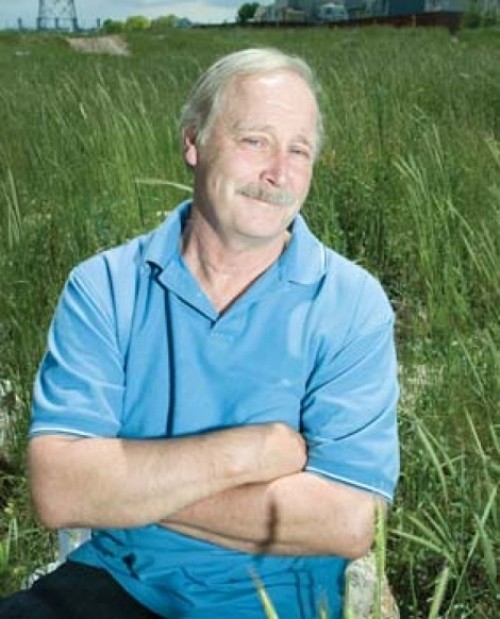News | Flower Power: Proposed highway ensures death by asphalt for Hunter High’s botany learning lab
By Tom NelsonPlayer’s outdoor lab is now in peril. It faces being plowed under and covered in asphalt by the proposed Mountain View Corridor.
The state-preferred route runs along 5800 West, through West Valley City and two blocks from Hunter High. The Granite School District Board has recommended the state choose an alternate route for the multilane highway to protect the respiratory health of the students. Player agrees with that recommendation, but his opposition to the road goes even deeper. It would destroy habitat where his science classes have studied and observed nature. “Hands on-instruction is important for any science student,” Player says. He’s troubled by the thought of losing a perfect outdoor haven with unique weed, grass and flower varieties.
The proposed route for the Mountain View Corridor in west Salt Lake and northwest Utah counties is in response to projected population growth. Various critics of the project are standing in line: Taxation opponents are fighting a state recommendation to turn the new highway into a toll road; interest groups such as Utah Moms for Clean Air are knocking its negative environmental implications.
“The population in many parts of western Salt Lake County and northwestern Utah County is expected to more than double by the year 2030.”
“That growth will cause significant delay on our transportation infrastructure and the ability to get around, affecting our quality of life and continued economic prosperity,” says corridor project manager TeriAnne Newell.
Highway administrators say they have tried to balance the need for the commuter route with respect for the environment. “After extensive study, UDOT and [the Federal Highway Administration] will select the most effective transportation system with the least amount of impact,” Newell says. The Utah Department of Transporation will compensate for impacts by creating new wetlands, restoring wetlands in other areas, and enhancing or preserving existing wetlands.”
Player recognizes the highway will benefit thousands of commuters but wishes it wasn’t so near the school. “The real concern is the route. The road will obviously be built since developers seem to be throwing in free land right and left,” he says. “But with the price of gas increasing at such a rapid rate, the luxury of living a long distance from our employment may go the way of the American bison.”
He’d love a deviation of the route around his plant zoo. But Player knows it’s highly unlikely. The lab costs taxpayers nothing, he says. Even with talk of mitigating damage to wetlands, Player says, there are no other areas like this field near the school.
UDOT considered two routes: One along 7200 West and the other along 5800 West. The 5800 West route got the nod because it can accommodate more traffic while affecting fewer homes along the route. UDOT spokesman Adam Carrillo says the preferred 5800 West route has been submitted to the federal government for review, and while UDOT determined it to be the best route, the feds may consider alternative routes.
Carrillo says an environmental impact statement on the freeway’s location “took years to complete and addressed every aspect in which the environment may be affected.” He says the document took into consideration historic properties, businesses, residence and air quality in attempts to make as small an impact on the environment as possible.
Still, Player’s voice seems to be one more among a growing torrent of complaints.
Losing the outdoor lab is one thing, Player says, but he also mourns the loss of the plants themselves. Frequent spring rains this year yielded abundant plant life. “When I first saw these wildflowers nearly 17 years ago, it almost knocked my socks off. I’ve grown attached to them since they can’t protect themselves. I also feel having these feelings for individual plants is a bit irrational. Perhaps it’s a deep-seated feeling for ancient survival value. Or perhaps I’m just goofy.”
More by Tom Nelson
-
News | Uprooted: Fire victim “Tree Bob” Brossard won’t give up on rebuilding his charred Avenues home
Most mornings Bob Brossard is by himself, sipping coffee or reading a book at a small table in an Avenues neighborhood bakery. Some days, he’s there early, others, he sleeps in—it all depends on when he gets out of bed. Brossard doesn’t...
- May 28, 2008
- More »
Latest in News
Readers also liked…
-
Raise a glass for E.L.T Harrison, architect of the Beerhive building on Main
Small Lake City
- Oct 11, 2023




